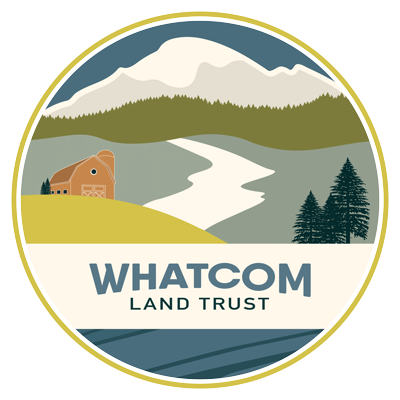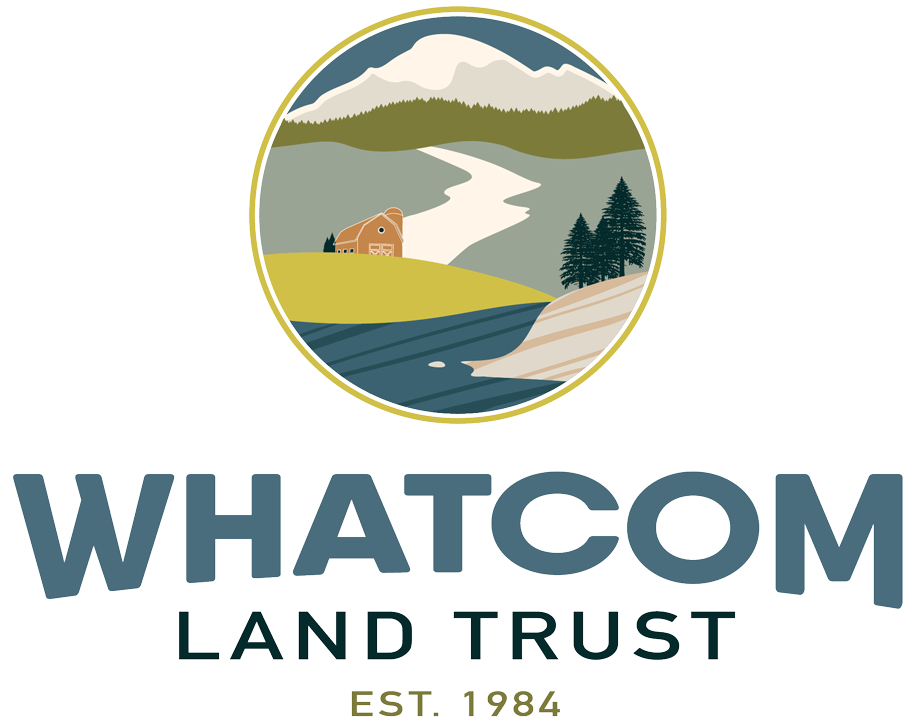The life cycle of the salmon is one to be admired. A consistent rotation of spawning, hatching, feeding, migration and the ultimate end of life sacrifice. With its cold, clear waters, Skookum Creek has the potential to provide salmon with the ideal habitat to live out the most important stages of their life cycle.
A salmon’s life begins in the fresh waters of our rivers, streams, and creeks. Under a pile of pebble sized gravel, hundreds of salmon eggs prepare to hatch. The location for a redd (salmon nest) is carefully chosen by the female to ensure that her eggs are protected from predators and fast moving waters. Once hatched, the young salmon remain close to the redd as they feed and mature into fry. As fry, the salmon spend the majority of their time avoiding predators as well as feeding in preparation for migration. The fry then go through the physical process of smolting where their scales gain a silvery color which allows them to both avoid predators and make the transition from fresh to saltwater. The length of time which salmon spend out in the ocean depends on how old they were when they entered, their species, and marine conditions. A salmon’s time in the sea is one of the least understood stages of their life cycle. After maturing in ocean waters, the fish eventually begin their journey back to the same stream where they hatched. This journey is long and difficult; only the most resilient and luckiest fish will make it all the way back to their place of birth.
Once returned, the female salmon work tirelessly to create a redd in a location which will keep her eggs safe until they are ready to hatch. Males compete over who will fertilize and pass on their DNA to the next generation of fish. After spawning, both males and females die, leaving their carcasses to nourish the ecosystem. Small organisms within the stream feed on the carcasses and will in time become food for the next young salmon. Bears, eagle, otters, and many others utilize the nutrients of salmon carcasses allowing their populations to thrive. Even the trees and plants benefit from the ocean nutrients brought back by the salmon to decompose into the soil. One of resilience, determination and sacrifice, a salmon’s life is truly a dedication to the future generation of salmon and other wildlife as well as the surrounding natural areas.
All five species of Pacific salmon utilize the South Fork for rearing and spawning. Three of those species, spring Chinook (listed as federally endangered), winter steelhead and bull trout find their way into Skookum Creek each year. Because of this rotating fish population, it is important to protect both Skookum and the South Fork for future generations.
In addition to the native fish which migrate up the South Fork and into Skookum each year, Lummi Nation operates the Skookum Creek Hatchery at the confluence of Skookum Creek and the South Fork Nooksack River. This hatchery produces 2 million Coho yearlings each year which are released in the spring to the waters of the South Fork. The hatchery also participates in the Chinook Captive Brodd Program, a multi-agency effort using DNA testing to strengthen threatened Chinook breeding and survival rates. The Skookum Hatchery raises and release one million Chinook yearlings into the South Fork Nooksack and Lummi Bay each year. The hatchery receives its water supply from Skookum Creek meaning that the health and success of the Coho population being produced relies on the water quality of Skookum. Whatcom Land Trust has partnered with the Lummi Tribe on numerous occasions to help restore and protect water quality in the South Fork Nooksack watershed.
Because of this constant need for clean, cool, well oxygenated waters, protecting riparian habitat along both the South Fork and Skookum is incredibly important to the regeneration of these species. Healthy riparian habitat provides shade, nutrients, and woody debris to the water which helps fish protect their nests and themselves from predators and warming water temperatures. Reduced amounts of sediment entering the water ensures that fish have enough oxygen to survive and eggs are able to fully develop and mature. Having a consistent flow of water all year round with minimal flooding events creates the potential for excellent salmon habitat. Skookum has the amazing potential to fulfil Whatcom Land Trust’s mission of restoring and protecting some of the most important cold water habitat in Whatcom County.
Witnessing the journey of the salmon is an unforgettable experience. During the fall and winter, both Whatcom Land Trust and Nooksack Salmon Enhancement Association (NSEA) host salmon viewing parties which provide members of the community an opportunity to view this special event. If you are interested in viewing salmon on one of Whatcom Land Trust’s properties feel free to contact us at (360) 650-9470 or amanda@whatcomlandtrust.org.


